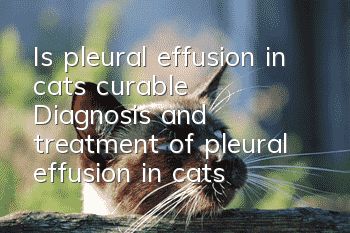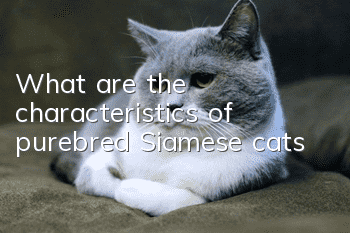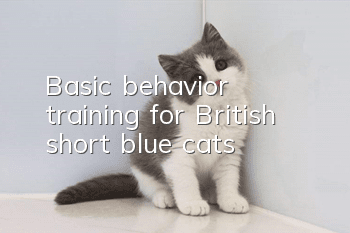Is pleural effusion in cats curable? Diagnosis and treatment of pleural effusion in cats!

Cats
Pleural effusion refers to the retention of more leakage fluid in the pleural cavity of cats. Under normal conditions, there is only a small amount of serous fluid in a cat's chest. Generally no more than 2 ml, it has the function of lubricating the pleura and reducing the friction between the lungs and the pleural wall during breathing. Pleural effusion occurs when there is an imbalance in the balance between the formation and absorption of pleural fluid.
The pleural cavity is a closed space composed of the parietal pleura and the visceral pleura. There is negative pressure in it. Under normal circumstances, there is a small amount of liquid between the two layers of pleura to reduce During breathing activities, the friction between the two layers of pleura facilitates the expansion and contraction of the lungs in the chest cavity.
According to the characteristics of pleural effusion, pleural effusion can be divided into pure leakage, modified leakage, and exudate. Laboratory sample testing plays a vital role. Different types of effusions can be caused by different or the same disease, but they can still lay the foundation for further differential diagnosis of the disease. Transudate and modified transudate may be secondary to increased intrapleural capillary hydrostatic pressure, decreased colloid osmotic pressure, and/or increased vascular permeability, while increased pleural capillary wall permeability and parietal pleural lymphatic drainage disorders are common. Causing exudate. Chest trauma is the main cause of empyema and hemothorax.
Chylous pleural effusion is relatively common in cats clinically. Its characteristics are: turbid, opaque, and milky; specific gravity >1.025, protein >20g/L, and cell number between 1000-17000/ul (mainly small cells). Lymphocytes), when the effusion sample meets the above conditions, and effusion triglyceride > plasma triglyceride, effusion cholesterol < plasma cholesterol, it can be determined to be chyle.
1. Diagnosis:
Comprehensive evaluation of cardiac and respiratory functions is helpful in diagnosing pleural effusion.
1. General examination
Standing or lying on the chest, percussion shows horizontal dullness on both sides of the chest wall. On auscultation of the chest wall, the heart sounds and breath sounds in the lower part of the lungs are significantly weakened, some animals have heart murmurs and arrhythmias, and the bronchoalveolar sounds in the upper part of the chest wall are enhanced.
2. Pleural cavity puncture
The pleural cavity puncture point is usually selected between the 6th and 8th intercostal spaces and below the horizontal line of the rib-costal cartilage connection. However, it should be noted that after the puncture needle punctures the pleura, the needle body should be moved immediately toward the chest wall and the needle tip should be kept inward to facilitate drainage of fluid and avoid damage to the expanding lungs. The collected puncture fluids are treated with anticoagulation, non-anticoagulation, and direct smear processing to facilitate serial examinations of cells, bacteria, and biochemistry.
3. The groove widens and the edge of the lung near the sternum becomes fan-shaped. X-ray dorsoventral or ventrodorsal images show that the mediastinum becomes wider, the lung boundary moves away from the chest wall, the costophrenic angle increases, and the lung edges here become rounded.
2. Treatment:
It is recommended toPerform thoracic puncture and drain the fluid. The test of the puncture fluid sample is an important basis for determining the cause of the disease. It is best to perform the thoracic puncture operation under ultrasound guidance to avoid accidental damage. This is more practical for cases where thoracic tumors are the cause, because it is more Large tumors can cause displacement of the anatomical positions of organs. For agitated cats, sedative drugs can be injected in advance according to the situation. Some diseases cannot be cured (such as tumors, heart disease), and pleural effusion will occur repeatedly. Doctors need to adjust medication or add diuretics according to the underlying cause, and perform regular pleural puncture to drain fluid. For purulent pleural effusion, it is recommended to place a thoracic catheter for pleural fluid drainage, supplemented by irrigation and targeted treatment. Surgical methods can also be used to remove the cause to achieve curative effect.
- Will Ragdoll cats’ fur become darker in winter?
- What kind of special litter box should be prepared for pet cats?
- Why do cats eat dead leaves?
- Is it good to neuter male cats?
- Is it okay for cats to eat one kind of cat food for a long time?
- Will impure folded-eared cats get sick?
- Do cats cry after being abandoned?
- Symptoms and treatments for spontaneous cystitis in cats
- Can hair in a cat's eye come out on its own?
- How to change a timid cat?



